Who in the Virgin Islands goes out hiking at noon in June?
Noel Coward’s song declares that only “Mad dogs and Englishmen go out in the midday sun.” But this proclamation does not consider the unique opportunity offered by the St. John Land Conservancy last Friday to hike Lovango Cay with renowned natural historian Olasee Davis.
Nearly 20 Virgin Islands residents braved the heat to learn about the dry forest ecology of this cay located about two miles north of Cruz Bay in Pillsbury Sound.
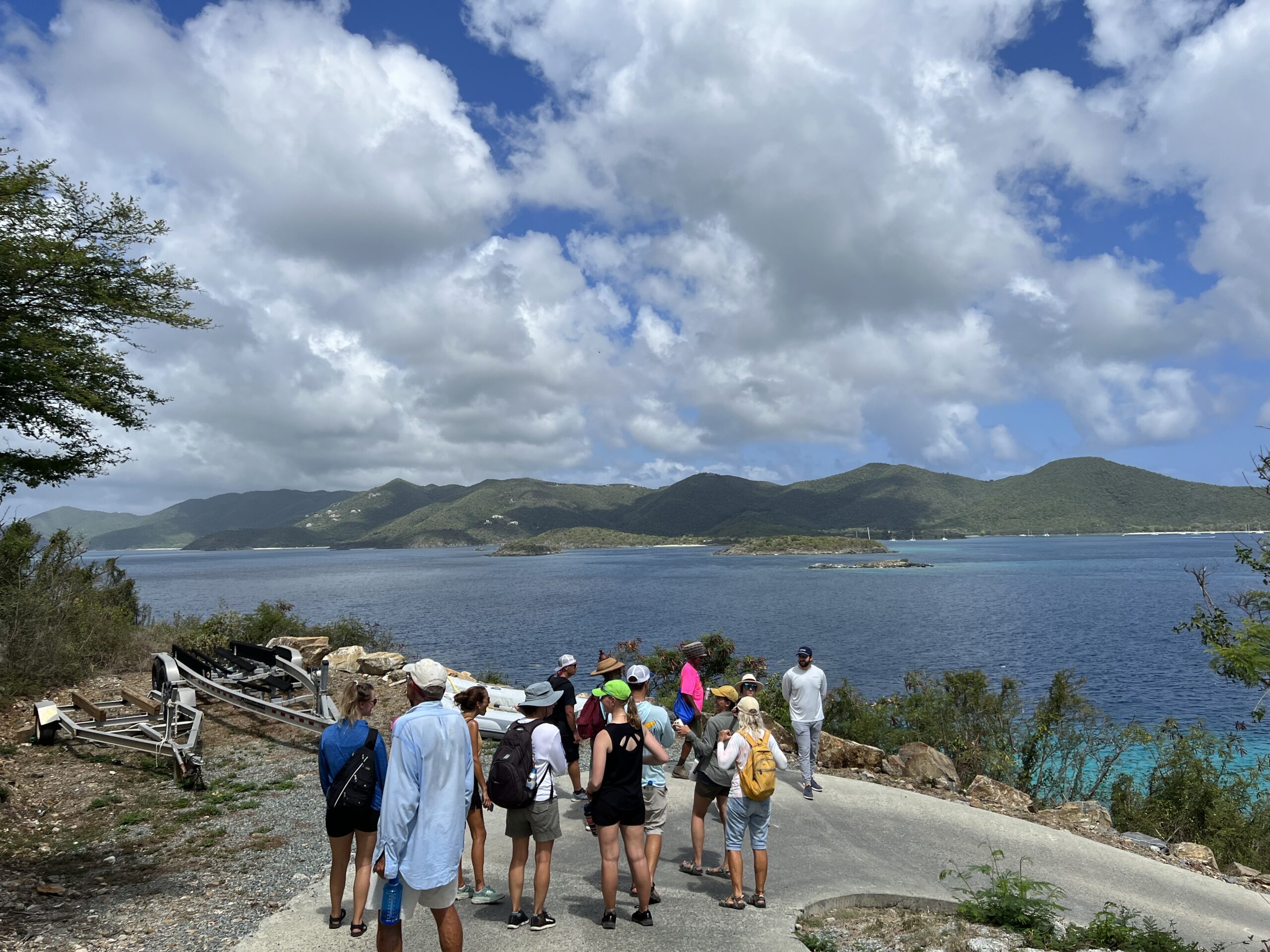
Lovango is no longer the inaccessible spot it has been through most of the known history of the islands. Since 2020, the Lovango Resort and Beach Club has been operating ferries to bring day visitors as well as overnight guests to enjoy the resort’s amenities, and many charter boats stop there as well.
The resort owns about 42 of the island’s 118 acres. While a half dozen private homes dot the western end of the island, the bulk of undeveloped non-resort property is owned by ancestral Virgin Islanders. However, the St. John Land Conservancy was deeded one acre at the eastern tip of the island “for public enjoyment, both scenic and otherwise, by current and future generations.”
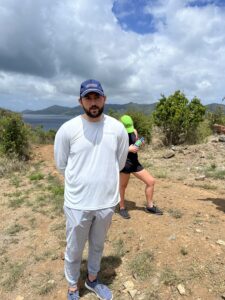
Matt Snider, the resort’s director of operations who hosted Friday’s hike, now serves on the board of the St. John Land Conservancy. As the son of the resort’s owners, he has been integrally involved in the resort’s development since 2019.
Snider told the hikers that they would not be able to access the Land Conservancy’s acre because the trail to the remote spot hasn’t been fully cleared and stabilized. The group was, however, able to hike a partially-paved trail to the top of the cay — with an elevation of nearly 250 feet — for views of St. John to the south and Congo Cay to the north.
As the group ascended the trail from the southern side of the island, Davis stopped often to describe dry forest ecology, which was changed substantially as the island was cleared by settlers. The cay was first deeded to William Gandy in 1728 by the Danish West India & Guinea Company, according to a timeline prepared by David Knight Sr. In 1730, Gandy was found dead in his hammock, believed to have been killed by his slaves, Knight wrote.
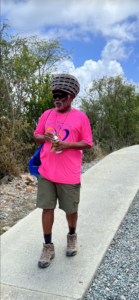
Lovango was never very densely populated. In 1901, the Census listed only three people living on Lovango, but in 1917, a public school was opened on the island to serve the population of 49 people in 19 households.
Throughout the centuries, the island was used for crop cultivation and grazing cattle. When settlers cleared the land, invasive species such as tan-tan grew, which made good fodder for animals but sucked the moisture out of the soil. Davis said that streams used to run year-round throughout the Virgin Islands prior to colonial development.
Davis spoke about the plants that continue to survive in drought-challenged conditions, including native species like inkberry (used traditionally for Christmas trees) and Maran (for shampoo, brooms and scrub brushes). He invited his listeners to consult a list of plants posted on the website of the University of the Virgin Islands, where he teaches.
From the trail’s peak, the group descended down the north side of the island, which is considerably lusher than the south side. The trail wove through a grove of Tyre palms — the islands’ only remaining native palm — which were used traditionally to make baskets, fish traps, brooms and roof thatching.
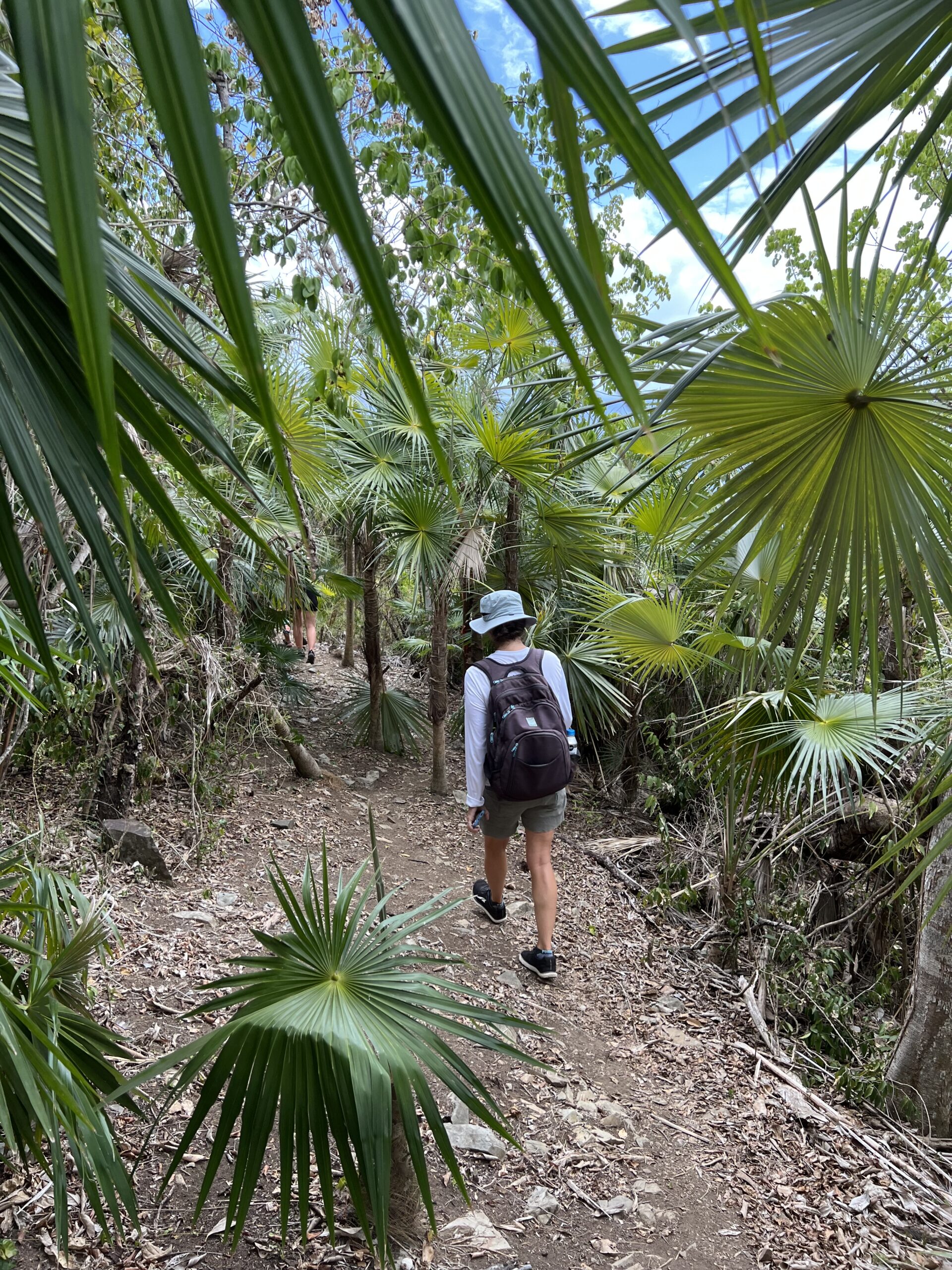
The cooler northside of Lovango is where the resort has built most of its guest units. Unlike most resorts, Lovango has opted to build units that are light on the land. Construction crews dug the holes for posts by hand. The overnight rates for luxury “treehouse” cottages are pricey. The rates for the smaller “glamping” tents are somewhat less.
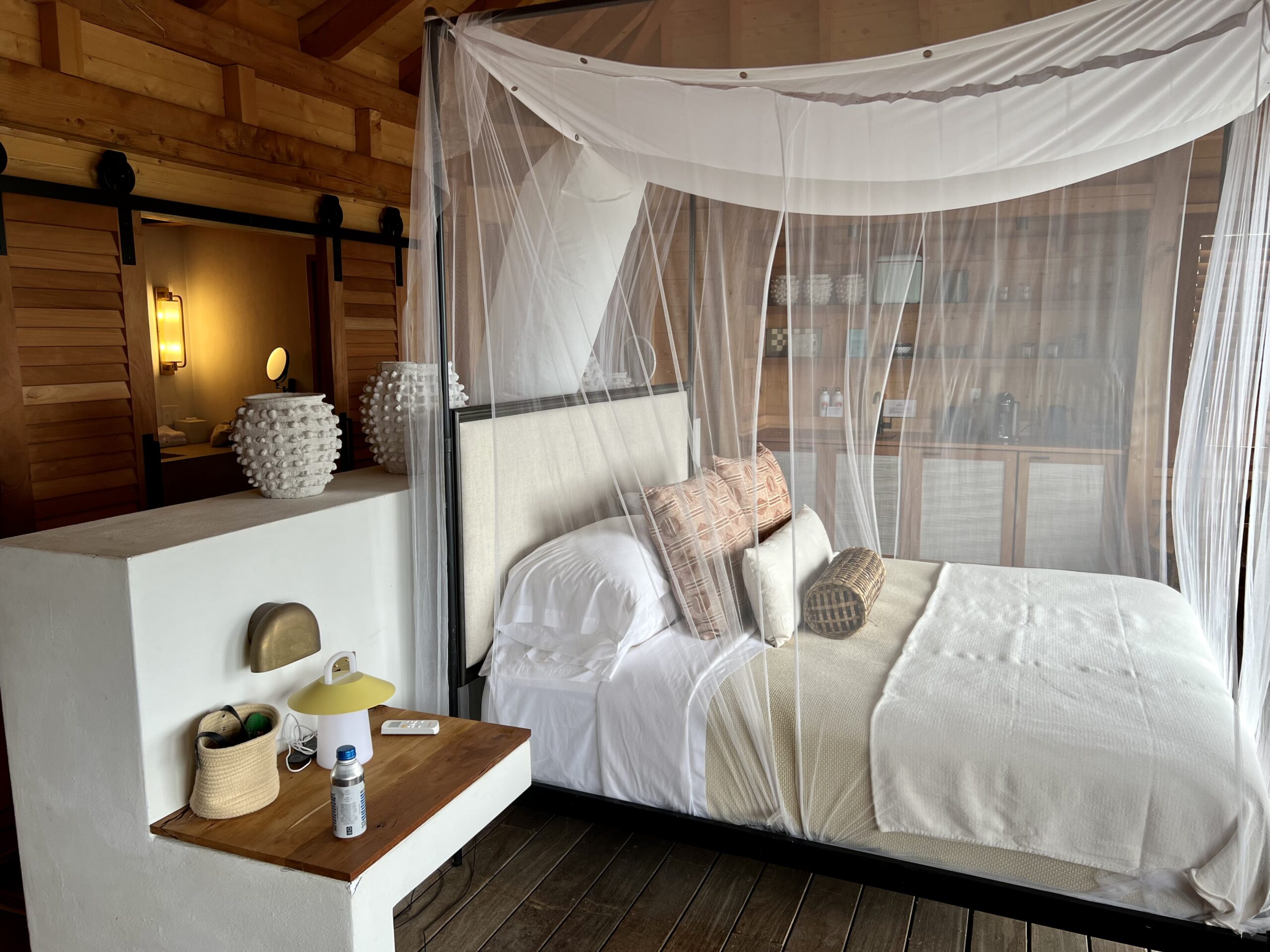
Day trippers who want to explore the island can use the website to reserve a spot on a ferry that makes several trips a day from Cruz Bay on St. John and Red Hook on St. Thomas. Lunch, dinner, and day passes to the beach club are available.





